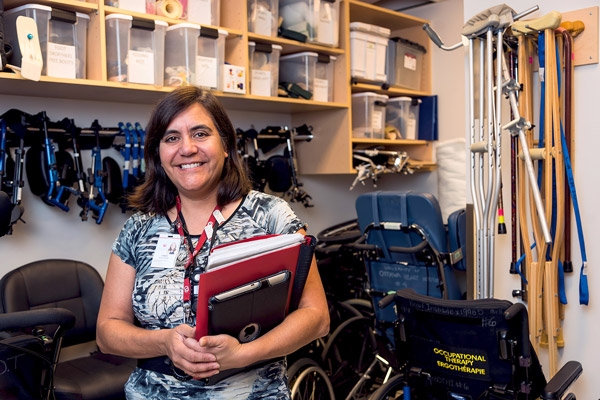Occupational therapy is proving to be one of the most important ways to avoid readmission to hospital. This was the finding of a study recently published in the journal Medical Care Research and Review which found readmission rates for heart patients were lower in hospitals that invested more in occupational therapy programs.
Researchers analysed 30-day readmission rates in over 2,800 hospitals in the United States for three medical conditions: heart failure, pneumonia and myocardial infarction (heart attack) and compared them to outcomes as they related to 19 different treatment and therapy categories. One of these categories was occupational therapy.
The authors concluded “occupational therapy is the only spending category where additional spending has a statistically significant association with lower readmission rates for all three medical conditions.”
By way of interpreting this result, the authors pointed out that occupational therapy “focuses on a vital issue related to readmission rates: can the patient be discharged safely into her or his environment?”
But what is it that an occupational therapist (OT) does that is so important to helping patients stay at home and out of the hospital? Linda Varas-Brule, an OT in the Cardiac Rehabilitation program at the Ottawa Heart Institute, explained that occupational therapy is about activity and lifestyle support. OTs look at day-to-day functioning and help people be as independent as possible, whether it’s in hospital, alternative care centres or at home.
OTs work with patients to help them perform activities that match their current abilities. They assess whether a patient can safely live independently, what tools or supports a person needs to able to live on their own and whether someone needs further rehabilitation or nursing care.
When a patient is discharged from the Heart Institute, an OT can do a home visit to make safety assessments and suggest modifications—such as installing grip bars—or suggest devices that make various daily tasks easier. OTs also offer training in how to do tasks differently to compensate for deficits such as muscle weakness, problems gripping things or memory issues.
For patients with functional difficulties, the OT is the one who can suggest assistive devices and teach patients to use them. “We’re the ones who know what all the gizmos are that can help people with their daily activities,” Varas-Brule said.
One example is a “reacher,” a stick with a specialized grip at one end that helps with putting a sweater or shirt on by making it easier to reach the second sleeve so users can put their arm in. Another device, the “bathtub transfer bench,” is helpful for people who can’t step into a tub. It sits across the tub and extends to just outside of it. A person sits on the bench then wriggles over into the tub.
There is a bewildering variety of devices available to help with mobility, making and eating meals, grasping things, cleaning, toiletry and more. There are even specialized feet that can be attached to living room chairs to elevate them to a height that is easier for people to manage.
OTs also perform cognitive assessments which help determine how well people can manage. Do they need help remembering to take their medications? Would daily phone-call reminders help? Can they open medicine containers, or do they need an alternative system?
“OTs work closely with patients determining their strengths and weakness. We also work with caregivers or family members on ways they can help. We’re all part of a team,” she said.


